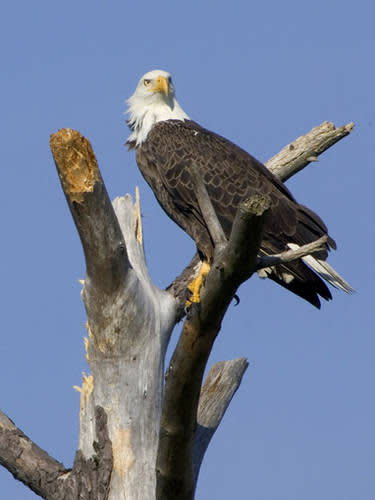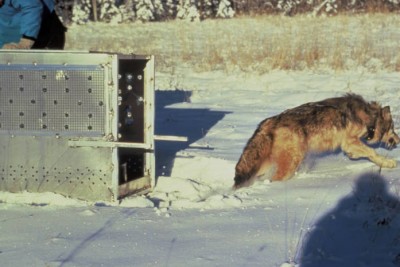Western Governors Unite on Need to Update the Endangered Species Act
James Swan 07.22.13

On July 1, 2013, the nonpartisan Western Governors’ Association, which represents 19 governors from Kansas to American Samoa and Guam, approved a very important resolution concerning the Endangered Species Act of 1973 (ESA) and its current use.
The ESA has been both a blessing and a curse. While there have been some dramatic recoveries, they have been accompanied by political, legal, scientific, and economic controversies; notably those of the northern spotted owl, gray wolf, and the snail darter, which have resulted in significant economic damage for local communities (see Alston’s Chase’s book, In a Dark Wood: The Fight Over Forests and the Myths of Nature).
In the wake of the first Earth Day, in 1973 Congress passed the ESA seeking to prevent a number of the nation’s plants and animals from becoming extinct. To enforce the ESA, the U.S. Fish and Wildlife Service (USFWS) was assigned responsibility for land and freshwater animals and plants and the National Marine Fisheries Service (NMFS) was made responsible for marine animals and plants.
The law calls for two categories of species of concern. “Threatened,” which means that a species is likely to become endangered in the foreseeable future, and “Endangered,” which means it presently is in danger of becoming extinct throughout all or a significant portion of its range.
There are five factors used to determine whether a species qualifies for ESA protection:
- there is present or threatened destruction, modification, or curtailment of its habitat or range;
- there is overutilization for commercial, recreational , scientific or educational purposes, resulting in declining populations;
- the species is threatened by disease or predation;
- existing regulatory mechanisms are not protecting a species; and
- some other natural or man-made factors are threatening its continued existence.
The USFWS and NMFS are charged to base their decisions about the status of a species based on the best available scientific evidence. They also keep a list of “Candidate” species that are being watched to see how the populations are faring.
There is also a fourth category of listing associated with recovery efforts” “Experimental Essential or Non-essential Populations,” the most notable and controversial today being gray wolves in the Northern Rockies that were transplanted from Canada in 1995 into an area where they once lived and where their population has now exploded.
As of January 2013, some 2,054 species are listed as “Endangered” or “Threatened” worldwide and 1,436 are found on U.S. soil. Once listed, the federal agencies prohibit the “take” of the species. Listed plants are not protected on private lands, but they are on federal lands. Both civil and criminal penalties result from violating the act.
The goal of the ESA is “recovery” of the species. Federal agencies work with states, tribes, and local governments to create recovery. Since 1973, there are some real success stories of recoveries aided by the ESA, including: Bald Eagle (increased from 417 to 11,040 pairs between 1963 and 2007), removed from the list in 2007; Peregrine Falcon (increased from 324 to 1,700 pairs between 1975 and 2000), removed from the list; gray wolf (populations have increased dramatically in the Northern Rockies, Southwest, and Great Lakes); gray whale (increased from 13,095 to 26,635 whales between 1968 and 1998), removed from list; and the grizzly bear (increased from about 271 to over 580 bears in the Yellowstone area between 1975 and 2005) and removed from the list in 2007.
“It is not logical to cause a species to be driven to extinction,” declared Mr. Spock in Star Trek IV: The Voyage Home. Lots of folks would agree with the Vulcan, although species do go extinct with or without human contact. However, with over 2,000 endangered species listed, and only 28 delisted due to recovery, a success rate of 1 percent over four decades proves that the ESA needs review and change.
The Western Governors’ Association has taken on the challenge of reworking the ESA directly. Their resolution begins with the statement that they “applaud the principles of the Endangered Species Act,” which has “helped prevent the extinction and assisted the recovery of some threatened and endangered species, while providing ancillary benefits to other sensitive species.”
However, they go on to state that while the “ESA is premised on a strong federal-state partnership,” this is not happening. The resolution continues by affirming that the “Act and its implementation need to provide expanded, meaningful opportunities for states to comment, participate, or take the lead before the federal government makes any number of decisions under the ESA” and that “the role of states also has been limited by rigid internal federal processes, interagency jurisdictional disputes, and interpretations of the provisions of the Federal Advisory Committee Act (FACA).”
The Western governors then call on Congress to amend and reauthorize the Endangered Species Act of 1973 based upon seven broad goals.

The straw that broke the camel’s back: gray wolves
While there have been a number of ESA controversies in the last 40 years, the transplanting of gray wolves from Canada to the Northern Rockies as “experimental, non-essential” seems to be the incident that really got the Western governors moving. The population of 66 “experimental” wolves that were released into Yellowstone National Park and Idaho in 1995-96 has exploded to 3,000 or more in Montana, Wyoming, and Idaho, and the population is expanding into Utah, Washington, Oregon, California, and possibly Colorado. The consequences for big game populations, especially elk and wild sheep, have been disastrous in some areas. There are questions as to why this took place, as there were some wolves already in the Northern Rockies and periodically wolves migrated from Canada into the northern U.S.
The gray wolf conservation program has especially been fraught with controversy pitting farmers, ranchers, and hunters against the USWFS and environmental organizations, some of which are dependent on saving species through legal and political action. Some say that this turns animals into “cash cows,” and environmental groups into “crisis addicts.”
Related to the Western governors’ resolution, an important new book about the wolf recovery program will be coming out this fall, The Real Wolf by Ted B. Lyon, Jr. and Will Graves, author of Wolves in Russia. Lyon is a Texas attorney, former state senator, and one-time fishing guide who has a recreation cabin in Montana, right in the middle of wolf country. Seeing the ecological and economic consequences of the explosion of gray wolves in the Northern Rockies firsthand, Lyon was a key player in crafting the rider to the 2011 budget bill that delisted wolves. The book is presented as if Lyon is presenting a case for delisting of the wolf to the court of public opinion.
The culmination of the book is a set of recommendations for changes to the ESA. To prepare for the book, in January Lyon convened a think tank at his Montana cabin. Attorneys and biologists came up with an analysis of the problem and a number of pragmatic strategies to improve the Endangered Species Act .
According to attorney Ben Barmore, who participated in the think tank, “one of our team members was involved in the discussions that led to the governors’ resolution. I’ve confirmed that our team member delivered the talking points to one of the governors for use in developing the resolution. We were not directly involved in the meetings that led to the resolution, so I obviously cannot confirm the extent to which they used them. However, the end product mirrors quite a few of our recommendations. You can make whatever conclusions you want from there.”
The Real Wolf will be coming out this fall as a paperback. The cost will be around $20. I will write a detailed story about the book when it comes out, but if you want to get in line to get a copy when it first comes out, drop a line to: Kelley Moore, Ted B. Lyon & Associates, P.C., 18601 LBJ Freeway, Suite 525, Mesquite, Texas 75150, or e-mail kmoore@tedlyon.com.

